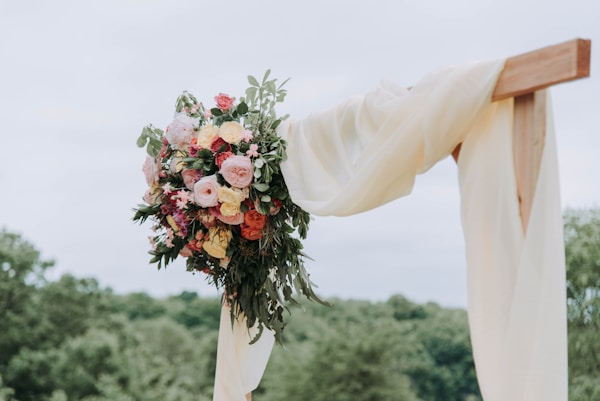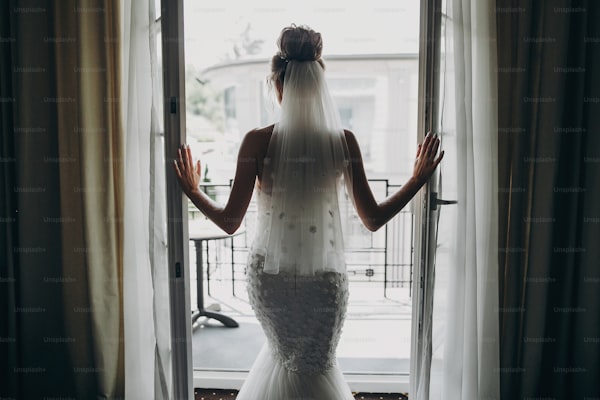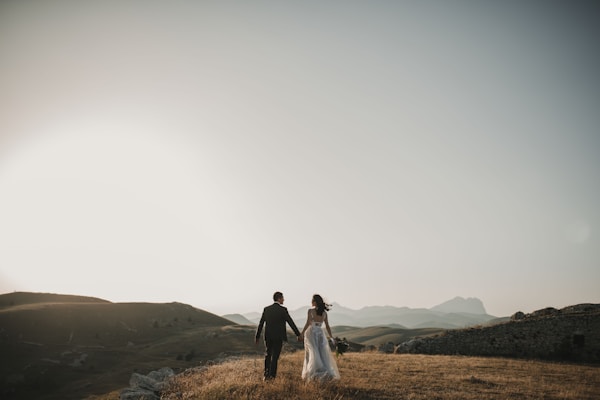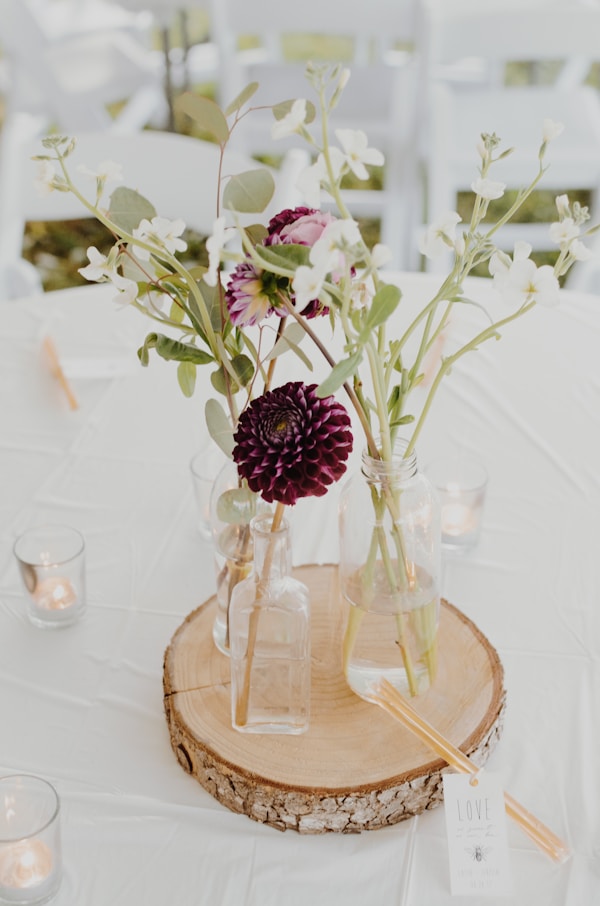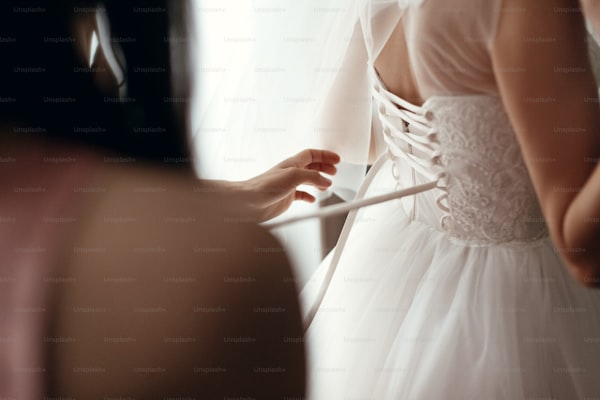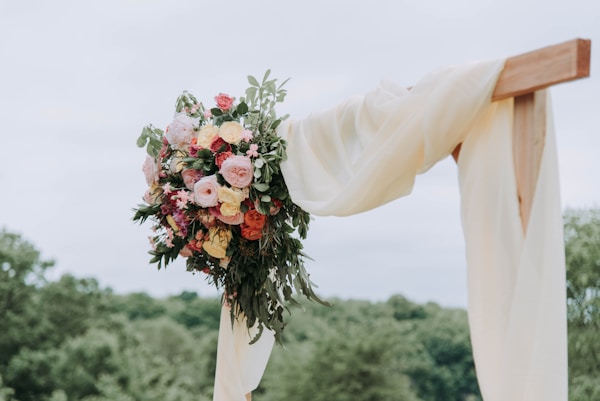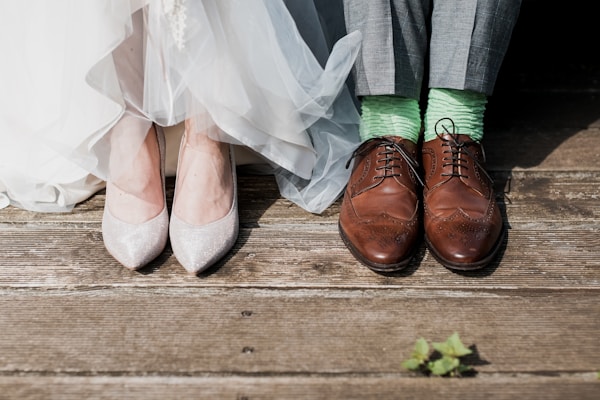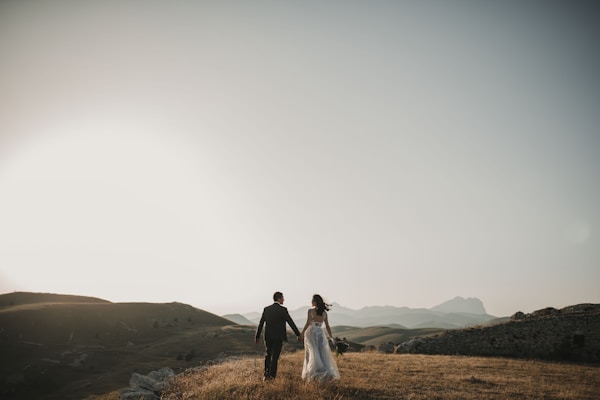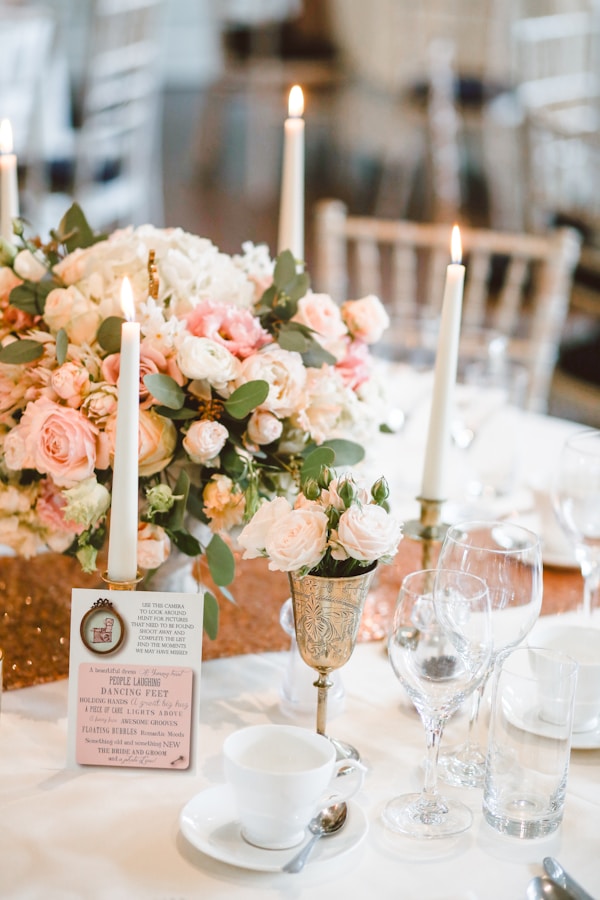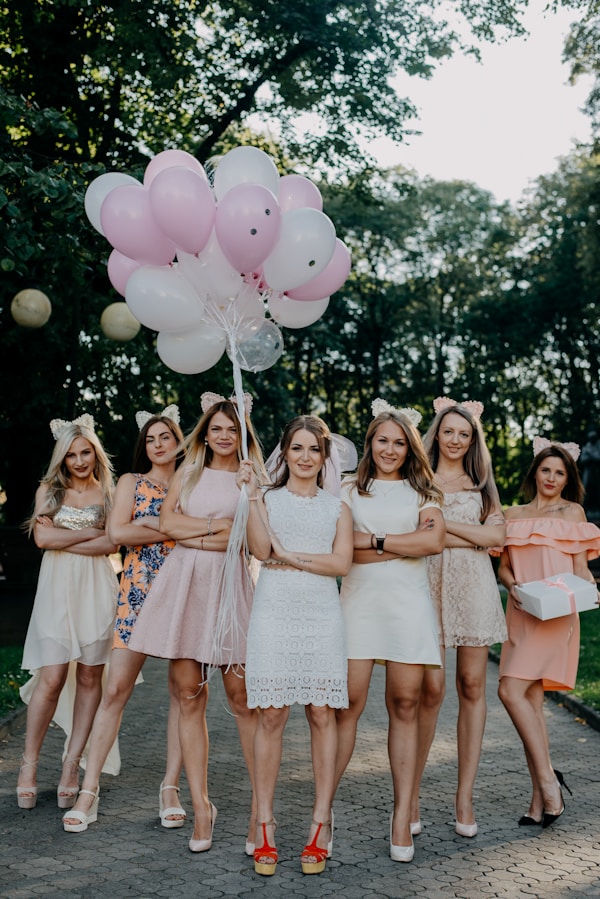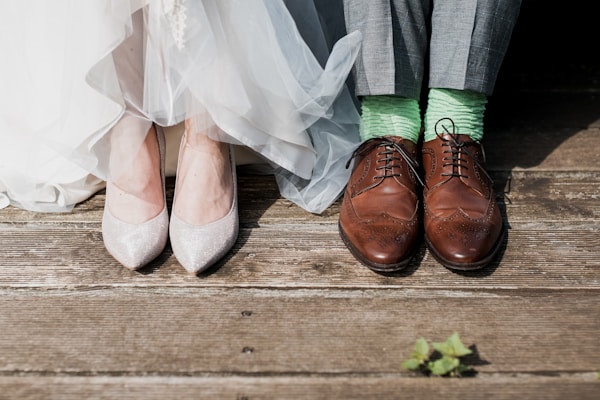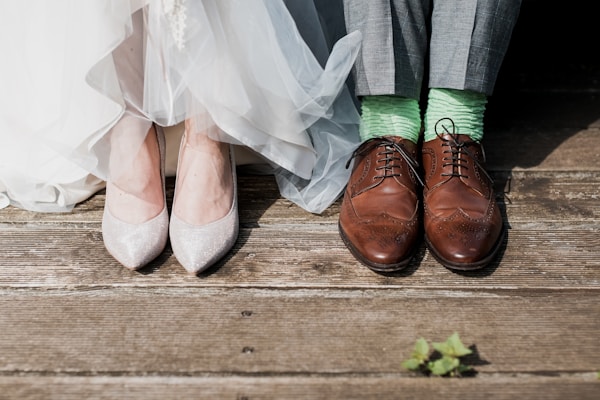Mastering the Art of Designing Wedding Dresses: Handling Fragile Materials
The Delicate Dance of DesignDesigning a wedding dress is a sophisticated blend of artistry and precision, but what happens when your dream fabric is more fragile than you anticipated? Whether you're a budding designer or a bride-to-be, knowing how to handle fragile materials when designing a wedding dress is crucial for achieving that perfect look while ensuring quality. In this article, we will explore the intricacies of working with delicate fabrics, from choosing the right materials to employing the best construction techniques to guarantee longevity and beauty.Understanding Fragile MaterialsWhen discussing fragile materials typically used in wedding dress design, the following fabrics often come to mind:FabricCharacteristicsSilkLuxurious and soft, silk is prone to snagging and requires special care.LaceDelicate and intricate, lace can easily rip or lose form if handled roughly.TulleLightweight and airy, tulle is vulnerable to tearing and should be treated gently.ChiffonSheer and flowing, chiffon can fray easily and requires careful sewing techniques.Each of these fabrics has unique qualities that contribute to the overall aesthetic of a wedding dress but also challenges that must be addressed during the design process.Selecting the Right Material for Your VisionThe first step in handling fragile materials for a wedding dress is making an informed choice. Consider the vision you have for the dress and how different fabrics can come into play. For example, a vintage-inspire...
Mastering Lace Trim Application for Wedding Dresses: Techniques and Tips
Introduction The beauty and craftsmanship of a wedding dress are often defined by its intricate details, with lace trims standing out as one of the most sought-after embellishments. Many brides want to know, what methods are used to apply lace trims to a wedding dress? This article will explore various techniques, considerations, and tips for applying lace trims, making it essential not only for dressmakers but also for DIY brides looking to elevate their bridal outfits. Understanding Lace Trims Lace trims come in various styles and patterns, each adding a unique touch to a wedding dress. From delicate Chantilly lace to bold Alençon lace, each type requires distinct methods of application. Typically, lace trims can either be sewn directly onto the gown or applied with adhesive, depending on the desired style and fabric of the main dress. Methods of Applying Lace Trims When it comes to applying lace trims, several methods are popular among designers and DIY enthusiasts alike. Below are the most common techniques: MethodDescription Hand SewingUsing a needle and thread to carefully sew the lace trim onto the fabric, offering precision and control over the detailing. Machine SewingEmploying a sewing machine for larger lace pieces, ensuring a consistent stitch and faster application. Fabric GlueUsing specialized fabric glue for a no-sew application, providing a simple and quick method, particularly for those uneasy with needlework. Bias Tape MethodApplying lace using...
How to Achieve a Balanced Look When Designing an Asymmetrical Wedding Dress
Wedding dresses have always been a center of focus and creativity in the bridal fashion industry. One style that has gained popularity in recent years is the asymmetrical wedding dress. While this unique name suggests a departure from the traditional, creating a balanced and harmonious look within this style can be a challenging yet rewarding endeavor. In this article, we will delve into the techniques, considerations, and tips for achieving a balanced look when designing an asymmetrical wedding dress.Understanding Asymmetry in Wedding DressesAsymmetrical designs often evoke feelings of modernity and sophistication. However, they can also present a challenge in terms of achieving visual equilibrium. To understand how to create balance, it's essential to grasp the fundamentals of asymmetry.Asymmetrical wedding dresses can vary in numerous ways:Type of AsymmetryDescriptionSilhouetteVarying hemlines, such as a longer train on one side.NecklineDifferent neckline styles, such as a one-shoulder design.DetailingUnique embellishments that draw attention to one side.The Importance of Contrast and ProportionWhen designing an asymmetrical wedding dress, contrast and proportion play pivotal roles in creating balance. For instance, pairing a voluminous skirt with a fitted bodice can create a visually appealing tension. Similarly, contrasting colors in fabric and detailing can draw attention evenly and enhance the dress's overall allure.Consider the following tips for incorporating contras...
How to Design a Wedding Dress That Flattens Different Body Shapes: A Comprehensive Guide
Understanding Body Shapes in Wedding Dress DesignDesigning a wedding dress that flatters different body shapes is an art that combines aesthetic appeal with a keen understanding of fashion principles. From the moment an individual becomes engaged, the quest to find the perfect wedding dress begins. Each body type has unique features that can be accentuated or downplayed, and it’s essential to keep these in mind throughout the design process. In this article, we will explore how to create wedding dresses that not only cater to various body shapes but also enhance the bride's natural beauty.Identifying Different Body ShapesBefore diving into the specifics of wedding dress design, it’s crucial to identify the common body shapes that many brides possess. The most prevalent body shapes include:Body ShapeDescriptionA-LineThis shape is characterized by a fitted bodice that flares out from the waist, resembling the letter 'A'. It compliments most body types.HourglassDefined by a well-balanced bust and hips with a narrow waist, this shape is often considered the ideal body type.PearWith a smaller upper body and larger hips, dresses that add volume to the shoulders can help balance this shape.AppleThis shape features a less-defined waist with fuller hips and bust. Empire waist dresses work wonders here.RectangleLacking defined curves, this body shape can benefit from dresses that create the illusion of a curvier silhouette.Design Principles for Flattering Wedding DressesOnce you’ve ide...
Mastering the Art of Seamless Transitions: Techniques for Wedding Dress Bodice to Skirt Design
What Techniques Are Used to Create a Seamless Transition from Bodice to Skirt on a Wedding Dress? The wedding dress is often regarded as one of the most iconic and cherished elements of a bride's big day. While your guests will surely be amazed by your overall look, the elegance of the transition between the bodice and skirt can make or break the entire ensemble. This article delves into the techniques that designers utilize to achieve a seamless flow from the bodice to the skirt of a wedding dress. Understanding the Bodice and Skirt Connection The bodice of a wedding dress is the upper part that fits closely to the body, while the skirt is the flowing portion that creates the stunning silhouette. A successful transition between these two sections requires careful planning and skilled techniques. Let’s explore the top methods that bridal designers employ to ensure that this transition is seamless and visually captivating. 1. Picking the Right Fabric The choice of fabric is pivotal when creating a seamless transition between the bodice and skirt. Fabrics such as chiffon, tulle, and satin can be manipulated to create a unified look. For instance, a heavier fabric like satin can provide structure, while lightweight fabrics such as chiffon can lend a flowy, ethereal feel. 2. Creating an Integrated Design A successful wedding dress design incorporates the bodice and skirt as a cohesive unit. Designers often sketch their visions out, paying special attention to how t...
Exploring the Art of Applying Delicate Fabric Layers to Wedding Dresses
When it comes to creating the perfect wedding dress, the application of delicate fabric layers is a crucial aspect of design that can transform a dress from ordinary to extraordinary. Understanding the various methods used to apply these layers not only enhances the overall aesthetic but also ensures that the gown complements the bride’s silhouette beautifully. In this article, we will delve into the different techniques utilized in the industry, the fabrics often chosen, and the visual impact that these layers can deliver.Understanding Delicate Fabric LayersDelicate fabrics such as lace, chiffon, tulle, and organza are commonly used in wedding dresses because of their lightweight nature and ability to create an ethereal effect. These materials can be layered in numerous ways, each offering a unique look and feel. Let’s explore some popular methods used to apply these delicate layers to wedding dresses.The Most Common Methods for Applying Fabric Layers1. Layering TechniquesThe fundamental approach to using delicate fabrics in wedding dresses is layering. Designers often start with a base layer, which could be a fitted satin or silk underlay. Following this, the designer may add layers of tulle or chiffon to provide volume and movement.Fabric TypeCharacteristicsLaceIntricate designs, used for overlaysTulleLightweight, adds volume and structureChiffonSoft, flowing, perfect for drapingOrganzaSheer and crisp, provides shape2. Appliqué MethodAppliqué is a technique where smaller p...
How to Design a Wedding Dress with Detachable Straps: A Comprehensive Guide
Understanding the Concept of Detachable Straps in Wedding Dress DesignDesigning a wedding dress is a thrilling yet challenging task, especially when it comes to incorporating unique features like detachable straps. A wedding dress with detachable straps offers versatility, allowing brides to transition from a traditional chapel ceremony to a lively reception seamlessly. In this guide, we will explore how to design a wedding dress with detachable straps that embodies elegance, comfort, and style.The Benefits of Detachable StrapsDetachable straps provide numerous advantages when it comes to wedding dress design. Below are some of the key benefits:BenefitDescriptionVersatilityBrides can easily change their look from ceremony to reception.ComfortAllows for easier adjustments, especially for outdoor weddings.Style OptionsStraps can be styled in various ways, adding a unique touch to the dress.Cost-EffectiveBrides can enjoy two styles in one dress, saving on their overall cost.Choosing the Right FabricThe choice of fabric is crucial in determining how your detachable straps will look and feel. Lightweight fabrics allow for more movement, while heavier fabrics provide structure. Consider the following fabric options:Chiffon: Lightweight and flowy, perfect for soft, romantic styles.Satin: Offers a luxurious, polished look that drapes beautifully.Lace: Adds elegance and intricate details to your dress.Organza: A stiffer fabric that creates volume and shape.Design Considerations for De...
Mastering the Art of Creating a Fitted Bodice with a Voluminous Skirt on a Wedding Dress
Introduction to Wedding Dress DesignWedding dress design is a fascinating blend of art and technique, particularly when it comes to creating a fitted bodice with a voluminous skirt. This combination has become a quintessential choice for brides seeking elegance and grace on their special day. In this article, we will explore the steps involved in achieving this beautiful silhouette, as well as address common queries about wedding dress designs, styling tips, and more.The Importance of a Fitted BodiceA fitted bodice is crucial for any wedding dress as it defines the bride's figure, accentuating her waist and providing a framework for the overall design. It is essential to achieve the perfect fit, which includes careful measurement and selection of the right materials. Measurement: Accurate measurements of the bust, waist, and hips are vital. Fabric Choice: Choosing materials such as satin, lace, or tulle can affect the overall look and feel of the bodice. Boning and Structure: Incorporating boning allows for added support and shape.The Allure of a Voluminous SkirtThe voluminous skirt is what transforms the wedding dress into a show-stopping masterpiece. This feature gives the dress a fairy-tale aspect, making it an ideal choice for brides who wish to make a statement. When designing this element, consider the following: Type of Skirt: Options include A-line, ball gown, or mermaid styles, each offering a different amount of volume. Layering: Using multiple layers of f...
Achieving a Structured Silhouette in a Wedding Dress Without a Corset
Your wedding day is one of the most significant moments in your life, and choosing the perfect wedding dress is essential. Many brides dream of achieving a beautiful structured silhouette, which is often associated with corseted designs. However, not every bride is comfortable with the idea of wearing a corset. If you are wondering how to achieve a structured silhouette in a wedding dress without a corset, you are not alone. This article will explore various methods, styles, and tips to help you find the ideal gown that offers the perfect amount of structure and support.Why Structured Silhouettes MatterA structured silhouette is often characterized by defined lines and shapes that enhance the body’s natural curves. This silhouette plays a significant role in how a wedding dress looks and feels. A flattering shape can make a bride feel confident and beautiful. It’s essential to understand the elements that contribute to this structured look, especially if you prefer to avoid the restrictions of a corset.Key Elements to Achieve Structure Without a CorsetHere are some strategies and features that can help you achieve that desired structured silhouette in a wedding dress without the use of a corset:1. Fabric ChoiceThe fabric of your wedding dress can significantly influence its structure. Opt for fabrics that have a natural stiffness and weight to them, such as: Silk Mikado: This blend of silk and nylon provides a luxurious, slightly heavier weight that holds its shape remarka...
What You Need to Know About Adding a Sheer Overlay to a Wedding Dress
When it comes to choosing the perfect wedding dress, every detail matters—especially the overlays. One popular option among brides is the sheer overlay, which can add a touch of elegance and uniqueness to any gown. However, there are several considerations to keep in mind before making this stylish addition to your wedding dress. In this article, we will explore the essential factors to consider when adding a sheer overlay, ensuring you make an informed decision for your special day.Why Choose a Sheer Overlay?A sheer overlay can dramatically transform your wedding dress, offering not just aesthetic enhancement but also practicality. Below are a few reasons why brides opt for a sheer overlay: Layering Effect: A sheer overlay provides depth and dimension to your gown, making it less flat and more visually interesting. Versatility: This type of overlay can be styled in various ways to match different themes—from bohemian to classic romantic. Comfort: A sheer layer can help to disguise elements like boning or seams that may be uncomfortable to the skin.Key Considerations for Adding a Sheer OverlayBefore deciding to add a sheer overlay to your wedding dress, consider the following factors:1. Fabric ChoiceChoosing the right fabric for your sheer overlay is crucial. Common materials include tulle, chiffon, and organza. Each fabric has its own characteristics:FabricCharacteristicsBest ForTulleLightweight and airy, offers a voluminous look.Ball Gowns, Romantic StylesChiffonSo...
How to Prevent Wedding Dress Fabric from Fading in Sunlight: Essential Tips for Preservation
The Beauty of Weddings and the Importance of Your Wedding DressYour wedding day is one of the most significant moments of your life. It's a day filled with love, joy, and unforgettable memories. At the heart of this special occasion is your wedding dress—a symbol of beauty and elegance. However, one of the most common concerns that brides face is how to prevent wedding dress fabric from fading in sunlight. In this article, we will explore effective strategies for preserving the vibrancy of your wedding dress, ensuring that it looks stunning for years to come.Understanding the Risks of Sunlight ExposureSunlight can be beautiful, but it can also pose a serious risk to delicate fabrics. The ultraviolet (UV) rays emitted by the sun can cause colors to fade, fabrics to degrade, and details to become less defined. Understanding these risks is the first step in taking proactive measures to protect your wedding dress.Factors Contributing to Fabric FadingSeveral factors contribute to the fading of wedding dress fabric, including: Fabric Type: Different fabrics have varying levels of susceptibility to sunlight. For instance, silk and satin are more prone to fading than polyester or tulle. Color: Darker colors tend to fade more quickly than lighter shades, primarily due to the way dyes interact with sunlight. Duration of Exposure: The longer a fabric is exposed to sunlight, the more likely it is to fade.Preventative Measures to Protect Your Wedding DressNow that we understand t...
Mastering Ruching Techniques for Wedding Dress Bodices
Understanding Ruching in Wedding Dress DesignWhen it comes to wedding dress design, one of the most sought-after details is ruching. This elegant technique adds texture and dimension, enhancing the overall beauty of the gown. But what exactly is ruching, and how is it specifically applied to a wedding dress bodice? In this article, we will explore the various techniques used to create ruching, its benefits, and trending styles, all while keeping your specific queries in mind.What is Ruching?Ruching refers to a sewing technique that gathers fabric so it appears puckered or pleated. This adds depth and distinction to garment designs. The technique is popular in wedding attire, where it embellishes the bodice, sleeves, and skirts, providing a romantic and charming appeal.Why Choose Ruching for a Wedding Dress Bodice?There are several reasons why you might opt for a wedding dress bodice with ruching: Flattering Silhouette: Ruching can help conceal imperfections and create a curvier appearance. Textural Diversity: The gathered look provides additional texture, contrasting beautifully with smooth fabrics. Style Versatility: Ruching works with various materials, from chiffon to organza, making it adaptable to different wedding themes.Techniques Used to Create RuchingThere are various techniques employed to achieve ruching on a wedding dress bodice. Here are some of the most common methods:1. Hand GatheringHand gathering is a traditional method where fabric is stitched along...
How to Achieve Perfect Color Consistency When Dyeing Fabric for a Wedding Dress
The Importance of Color Consistency in Wedding Dress Fabric DyeingChoosing the right color for a wedding dress is a crucial decision for brides-to-be. The hues not only represent personal style, but they also set the tone for the entire wedding. However, achieving consistent color when dyeing fabric can be a challenging endeavor, especially in a market saturated with various dyes and fabrics. In this article, we will explore effective strategies to manage color consistency when dyeing fabric for a wedding dress.Understanding Color TheoryBefore diving into the process of dyeing, it is essential to understand basic color theory. Colors can evoke emotions, and various shades may appear differently in different lighting conditions. Some brides may prefer soft pastels, while others may want bold colors to stand out. Here are a few concepts to consider: Hue: Refers to the actual color. Shade: A color mixed with black, making it darker. Tint: A color mixed with white, making it lighter. Value: The lightness or darkness of a color.Factors Influencing Color ConsistencyWhen it comes to fabric dyeing, multiple factors can influence color consistency:FactorDescriptionType of FabricDifferent fabrics absorb dye differently, affecting final color.Dye TypeFiber-reactive dyes vs. acid dyes yield different outcomes and consistency.Environmental ConditionsTemperature, humidity, and light can alter the dyeing process.Preparing for Color ConsistencyPreparation is key to achieving the ...
Unveiling the Secrets: What Methods Are Used to Create a Wedding Dress with a High Slit?
In the ever-evolving world of fashion, wedding dresses have undergone significant transformations over the years. One trend that has taken the bridal industry by storm is the high slit wedding dress. This style not only exudes elegance and sophistication but also allows brides to express their personal style. If you're wondering about the methods used to create these stunning garments, read on to discover the intricate processes involved in designing a wedding dress with a high slit.The Allure of High Slit Wedding DressesHigh slit wedding dresses are a bold choice, merging modern aesthetics with classic beauty. They cater to brides looking for something unique, comfortable, and provocatively elegant. But what does it take to create such a masterpiece? Let’s delve into the techniques that make these dresses stand out.Design and ConceptualizationEvery beautiful dress begins with a solid design concept. Designers draw inspiration from various sources, including: Fashion runways Cultural influences Personal preferences of the brideOnce the concept is finalized, sketches evolve, showcasing various elements, including fabric choices, colors, and the placement of the slit. Designers often collaborate with brides to incorporate personal touches that reflect their stories.Fabric SelectionThe choice of fabric is crucial in the design of a high slit wedding dress. Here are some popular fabrics used:Fabric TypeCharacteristicsChiffonLightweight, flowing, and perfect for a soft si...
Creating the Perfect Layered Hem Wedding Dress: A Comprehensive Guide
How Do You Design a Wedding Dress with a Layered Hem?Designing a wedding dress can be one of the most exciting and daunting tasks for any bride-to-be. Among the myriad of styles available, a wedding dress with a layered hem stands out as a unique statement piece that adds depth and dimension. In this article, we’ll explore how to design a wedding dress with a layered hem, discussing tips, techniques, and considerations while ensuring that all your questions are answered.Understanding the Concept of a Layered HemA layered hem involves multiple layers of fabric that create a tiered effect at the bottom of the dress. This design not only provides a romantic aesthetic but also allows for various styles, such as playful, elegant, or bohemian looks. Before diving into the design process, it’s essential to understand the different types of fabrics, silhouettes, and detailing you might want to incorporate.What Fabrics Work Best for a Layered Hem?Choosing the right fabric is fundamental in constructing a layered hem. Here are a few fabric options to consider:Fabric TypeDescriptionChiffonA lightweight and airy fabric that provides a flowy look, perfect for adding layers without bulk.TulleRefined and ethereal, tulle adds volume and an enchanting quality to layered hems.LaceLace can create intricate detailing and texture, enhancing the romantic vibe of the dress.SilkSilk offers a luxurious feel with a natural drape that can elevate the elegance of your design.Sketching Your DesignOnce yo...
What are the Best Practices for Attaching Crystals to a Wedding Dress Without Glue?
IntroductionBeautiful, sparkling crystals can add a stunning touch to a wedding dress, enhancing its elegance and style. However, the challenge lies in how to secure these sparkling embellishments without the use of glue. This article explores the best practices for attaching crystals to a wedding dress without glue, providing detailed insights and techniques that ensure longevity and a refined aesthetic. Whether you're a bride-to-be or a designer looking to incorporate crystal accents, this guide will help you navigate this delicate process.Understanding the Importance of Crystal AttachmentAttaching crystals to a wedding dress involves a blend of creativity, technique, and precision. When done correctly, the crystals can reflect light beautifully, making the bride look ethereal on her special day. Improper attachment, on the other hand, can lead to wardrobe malfunctions and diminish the overall look of the gown. Here are some key considerations: Weight Distribution: Ensure that the weight of the crystals is evenly distributed to avoid pulling on the fabric. Material Compatibility: Choose crystals and attachments that are compatible with the fabric of the dress. Longevity: Techniques used should ensure that embellishments stay in place throughout the event.Best Practices for Attaching Crystals to a Wedding Dress Without GlueThere are several techniques you can explore to attach crystals to your wedding dress without using glue. Here are the most recommended practices...
How to Achieve a Flawless Seam Finish on a Wedding Dress
Creating a flawless seam finish on a wedding dress is an essential aspect of bridal gown construction. A beautifully finished seam enhances the overall look of the dress and creates a polished, professional finish that every bride desires on her special day. In this article, we will explore various techniques, tips, and tricks to help you achieve that perfect seam finish. We will also cover frequently asked questions related to wedding dress seam finishing, including materials, tools, and methods used by professional seamstresses.The Importance of Seam FinishingSeam finishing is crucial for several reasons. It not only affects the visual appearance of the dress but also contributes to its durability and comfort. A properly finished seam prevents fraying, maintains the garment's shape, and ensures that the fabric layers lay flat against each other. This is particularly important in wedding dresses, which often involve multiple layers of delicate fabrics such as lace, tulle, or silk.Common Seam Types Used in Wedding DressesBefore we delve into the techniques for achieving a flawless seam finish, it's essential to understand the types of seams commonly used in wedding dress construction:Seam TypeDescriptionPlain SeamThe most basic type of seam, created by placing two fabric pieces together and sewing them along the edge.French SeamA seam that encloses the raw edges, providing a neat and polished finish, ideal for lightweight fabrics.Flat-Felled SeamUsed for a strong and durable ...
Unveiling the Art of Seamless Wedding Dress Creation: Techniques Behind Minimal Visible Stitching
What Techniques Are Used to Create a Seamless Wedding Dress with Minimal Visible Stitching?The quest for the perfect wedding dress is filled with anticipation and excitement. Among the myriad of styles and designs, a seamless wedding dress stands out for its elegance and sophistication. But have you ever wondered what techniques are employed to craft these stunning gowns with minimal visible stitching? In this article, we will delve into the intricate art of creating seamless wedding dresses, exploring the cutting-edge techniques and expertise that designers employ to achieve such exquisite results.Understanding Seamless DesignA seamless wedding dress is a masterpiece of design and structure, created to enhance the bride's natural beauty while offering a graceful silhouette. The key to achieving minimal visible stitching lies in several techniques that ensure the dress flows effortlessly, without interruptions from traditional seams.The Importance of Fabric ChoiceOne of the principal elements in creating a seamless wedding dress is the selection of fabric. Luxury fabrics like silk, satin, and chiffon are commonly used due to their drape and lightweight qualities. These fabrics allow designers to manipulate the material in ways that reduce the appearance of stitching.Techniques for Creating Seamless DesignsDesigners utilize several innovative techniques to ensure minimal visible stitching in wedding dresses. Here are some of the most popular methods:TechniqueDescriptionBias Cu...
A Comprehensive Guide on Handling Alterations for a Wedding Dress with Sequins and Embellishments
Understanding the Importance of Professional AlterationsWhen it comes to wedding dresses, particularly those adorned with sequins and embellishments, proper alterations are crucial. A well-fitted gown not only enhances the overall appearance of the bride but also boosts her confidence on the big day. However, handling alterations for such intricate designs requires expertise and attention to detail. In this article, we will explore how to handle alterations for a wedding dress with sequins and embellishments, ensuring a flawless fit.The Challenges of Altering Wedding DressesWedding dresses featuring sequins and embellishments present unique challenges during the alteration process. The delicate nature of these details means that improper handling can lead to damage. Here are some common challenges: Sequins Can Shift: When adjusting seams, sequins may shift, requiring repositioning afterward. Heavy Embellishments: These can make it difficult to keep the gown balanced and flattering while altering. Fabric Restrictions: Certain types of fabrics are more difficult to alter without compromising the design or integrity of the dress.Choosing the Right Professional TailorFinding an experienced tailor who specializes in wedding dress alterations is essential. Look for the following characteristics: Experience with Embellishments: Ensure the tailor has a portfolio showcasing their work on embellished dresses. References and Reviews: Seek recommendations from friends or check onlin...
Discovering the Art of Crafting a Wedding Dress for Graceful Movement
IntroductionYour wedding day is one of the most important occasions in your life, and the dress you wear is a crucial element of that special moment. However, it is not just about aesthetics; comfort and the ability to move gracefully throughout the day are equally essential. In this article, we will explore the various methods and techniques used to create a wedding dress that accommodates movement, ensuring you can dance the night away without any restrictions.Understanding Movement in Wedding Dress DesignWhen it comes to designing a wedding dress, the movement involves considering various factors, including the fabric, silhouette, and structural elements. Understanding these components can help brides feel comfortable and confident as they navigate their big day.Key Factors Influencing MovementTo ensure that a wedding dress allows for free movement, designers focus on the following key factors: Fabric Choice: The type of fabric plays a significant role in the flexibility and comfort of a wedding dress. Lightweight materials like chiffon, tulle, and silk drape easily and facilitate movement. Silhouette: Different silhouettes provide varying levels of mobility. A-line and empire-waist dresses often allow for more freedom of movement compared to fitted styles. Structural Features: The construction of the dress, including seams, darts, and linings, affects how the fabric falls and moves as you do.Methods to Enhance Movement in Wedding DressesDesigners and dressmakers ...
